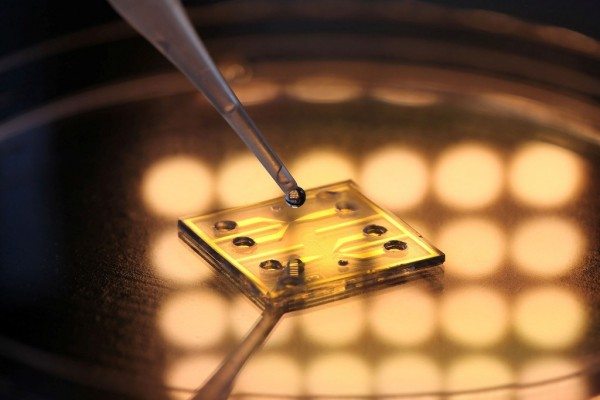 I love how technology can positively impact humanity. SBT Aqua is a Danish company that has come up with a device that will do just that. They have created a biosensor that is capable of instantaneously delivering online results about whether or not drinking water is contaminated with bacteria or not. The technology uses impedance flow cytometry. According to the SBT Aqua website,
I love how technology can positively impact humanity. SBT Aqua is a Danish company that has come up with a device that will do just that. They have created a biosensor that is capable of instantaneously delivering online results about whether or not drinking water is contaminated with bacteria or not. The technology uses impedance flow cytometry. According to the SBT Aqua website,
A liquid sample is continuously injected into a microfluidic channel with integrated electrodes over which a multi-frequency voltage signal is applied. Bacteria and particles transition across the electrodes which results in a change in impedance. The impedance change for bacteria is uniquely different compared to other non-organic particles, and it is therefore possible to provide a very accurate estimate of both the bacteria and particle count in the sample in real-time. The working principle detects all bacteria species in the liquid sample, as every bacteria will result in a corresponding impedance change when they enter the system.
Because today’s current technology requires manual handling of water samples as well as the pretreatment of samples and incubation time, this process takes up precious time and man hours all of which are avoided by using this new biosensor. The new technology would allow for multiple tests per hour along a water distribution network which would report results instantly if bacterial contamination is detected.
SBT Aqua’s biosensor is expected to be available in 2016.



Gadgeteer Comment Policy - Please read before commenting
Here is the problem with this device in a direct quote from the vendor – “The working principle detects all bacteria species in the liquid sample, as every bacteria will result in a corresponding impedance change when they enter the system.” I managed a laboratory in a waste water treatment plant so I know something about water analysis. All water contains bacteria. The problem is differentiating the harmless bacteria from the harmful species. What we did was to culture the bacteria on an agar plate and then do plate counts. All positive results had to be confirmed. I fear that SBT’s method will give a large number of false positives.
Donald – You bring up a really good point. I thought about that too after writing the post. Perhaps they (or others) will think of a way to resolve this issue in the future, thus making this a viable device to test for harmful bacterial contamination.
Hi Donald and Kathleen. You highlight some interesting aspects of our technology which we are very well aware of. As you have correctly understood from our website we approach the challenge of detecting contaminations in a water sample differently compared to today’s methods. We investigate the total bacteria level with a technology which is able to detect all bacteria in water (up to 10.000-100.000/ml in clean drinking water depending on the source) and monitor any changes to this level – preferably every 10/15 minutes. Traditional non-specific laboratory plate counts will only reveal a very small percentage of the bacteria in a given sample because most bacteria in water do not grow in the agar media under the provided growth conditions. Our studies show that when harmful bacteria enter a system, e.g. waste water heavily diluted in drinking water, you will also see a huge increase in other bacteria, as the harmful bacteria are not “flying solo”. Instead of using specific harmful bacteria such as e. coli as an indicator, we use the rapid rise in the total bacteria level to identify contaminations. I believe our advantage to traditional lab-analysis processes is our much larger statistical data foundation, which may be less accurate on a single sample point, but the accumulation of sample points every 10/15 minutes adds up and ultimately provides a much better overview of the quality of the water compared a single sample point every 3/7/14 days. Of course I am very biased, but hopefully this gives you a better idea of our way of thinking. You are more than welcome to contact me on my e-mail if you want to follow up on our discussion – we love feedback on our approach, especially from people with experience from the industry!
Gustav – Thank you for taking the time to further explain how you use your biosensor. I’m not familiar with water treatment plants, so thank you for being available to those who are and may have more questions. I also want to applaud you and your colleagues’ ingenuity and look forward to hearing how your device works in large scale operations.